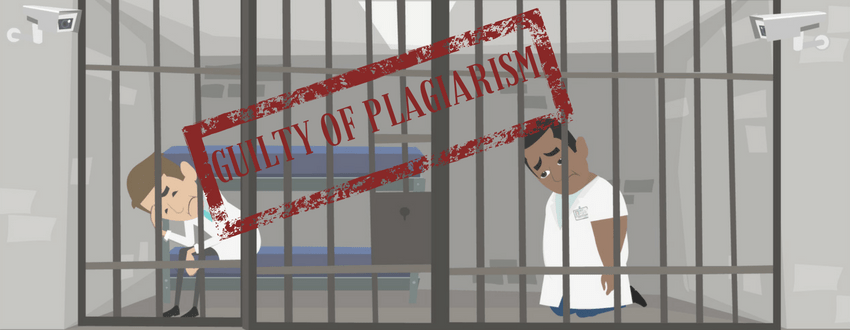
Plagiarism, or passing someone else’s work as your own, is not a new phenomenon in research. It has gained greater attention with the advent of technology that has made it easier to uncover instances of plagiarism. There are many types of plagiarism already described. Although no degree of plagiarism is acceptable, it can range from complete plagiarism, as the most egregious act of fraud, to accidental plagiarism.
However, not all types of plagiarism are alike. When analyzing whether something is an act of plagiarism, the determination of whether it was intentional or unintentional, plays an important role. That is why knowledge about plagiarism is a key learning component at colleges and universities. It addresses the gravity of both intentional and unintentional plagiarism.
Types of Plagiarism
With respect to the gravity and frequency of plagiarism, a survey of scientific researchers has produced a ranking of plagiarism types. While complete plagiarism represents the most serious offense, paraphrasing is the one that is the most common. It is, thus, very important to consider and understand all the various types of plagiarism and how they occur.
Complete Plagiarism
Complete plagiarism is the most severe case of plagiarism where a researcher takes a manuscript or study that someone else created, and submits it under his or her name. It is also considered intellectual theft and stealing.
Source-based Plagiarism
Plagiarism may occur because of the different types of sources. For example, when a researcher references a source that is incorrect or does not exist, it is a misleading citation. Plagiarism also occurs when a researcher uses a secondary source of data or information, but only cites the primary source of information. Both these types lead to increase in the number of references sources. This, in turn, increases the citation number of the references.
Finally, data fabrication and falsification are also forms of plagiarism. Data fabrication is the making up of data and research findings, while data falsification involves changing or omitting data to give a false impression. The consequences of this type of plagiarism can be grave, particularly when it comes to medical research which constitutes evidence for medical decisions.
Direct Plagiarism
Direct or verbatim plagiarism occurs when an author copies, the text of another author, word for word, without the use of quotation marks or attribution, thus passing it as his or her own. In that way, it is like complete plagiarism, but it refers to sections (rather than all) of someone else’s text. This type of plagiarism is considered academically dishonest and it calls for academic disciplinary actions. It is not as common, but it is a serious infraction of academic rules and ethics.
Self or Auto Plagiarism
Auto-plagiarism, also known as self-plagiarism or duplication, happens when an author reuses significant portions of his or her previously published work without attribution. Thus, this type of plagiarism is most likely to involve published researchers, rather than university students. The severity of this kind of infraction is under debate, depending on the copied content. Many academic journals, however, have strict criteria on the percentage of author’s work that is reusable. Many journals run the manuscripts through plagiarism software before considering it for review.
Paraphrasing plagiarism
This is, as published on Wiley, the most common type of plagiarism. It involves the use of someone else’s writing with some minor changes in the sentences and using it as one’s own. Even if the words differ, the original idea remains the same and plagiarism occurs. Because students often do not have a clear understanding of what constitutes plagiarism, there are recommendations for research and writing available to reduce the risk of paraphrasing plagiarism.
Inaccurate Authorship
Inaccurate authorship or misleading attribution can happen in two ways:
In one form, when all the authors contribute to a manuscript, but do not get credit for their work. The second form is the opposite: when an author gets credit without contributing to the work. This type of plagiarism, whichever way it occurs, is a violation of the code of conduct in research.
It is also possible to commit this form of plagiarism when someone else edits a manuscript leading to substantive changes. In this case, the recommendation is to acknowledge the contribution at the time of publication, even if they are not listed as authors.
Mosaic Plagiarism
Mosaic plagiarism may be more difficult to detect because it interlays someone else’s phrases or text within its own research. It is also known as patchwork plagiarism and it is intentional and dishonest.
Accidental Plagiarism
Whether intended or unintended, there is no excuse for plagiarism and the consequences are often the same. However, plagiarism may be accidental if it occurred due to neglect, mistake, or unintentional paraphrasing. Students are likely to commit accidental plagiarism, so universities should stress on the importance of education about this form of plagiarism.
